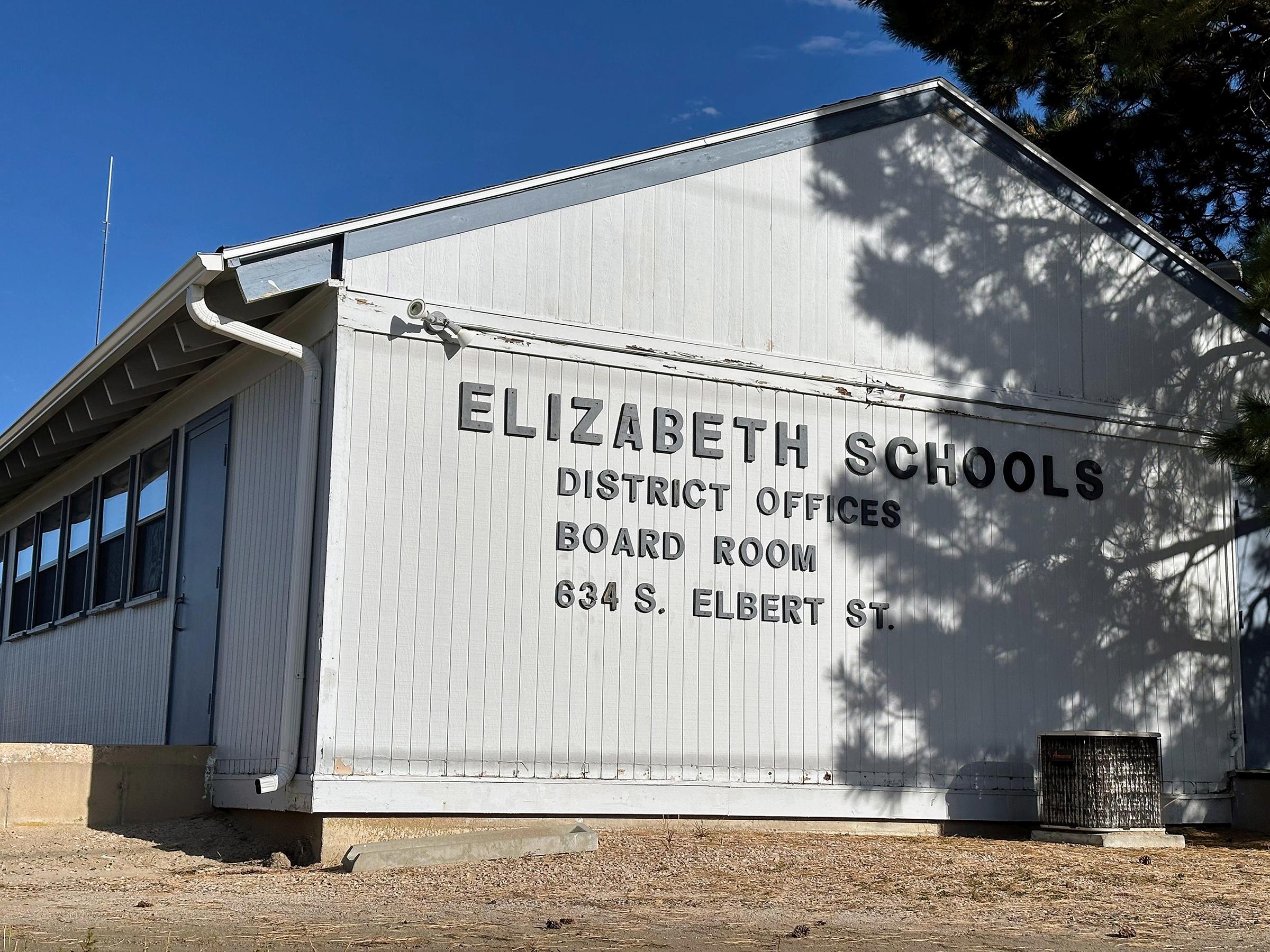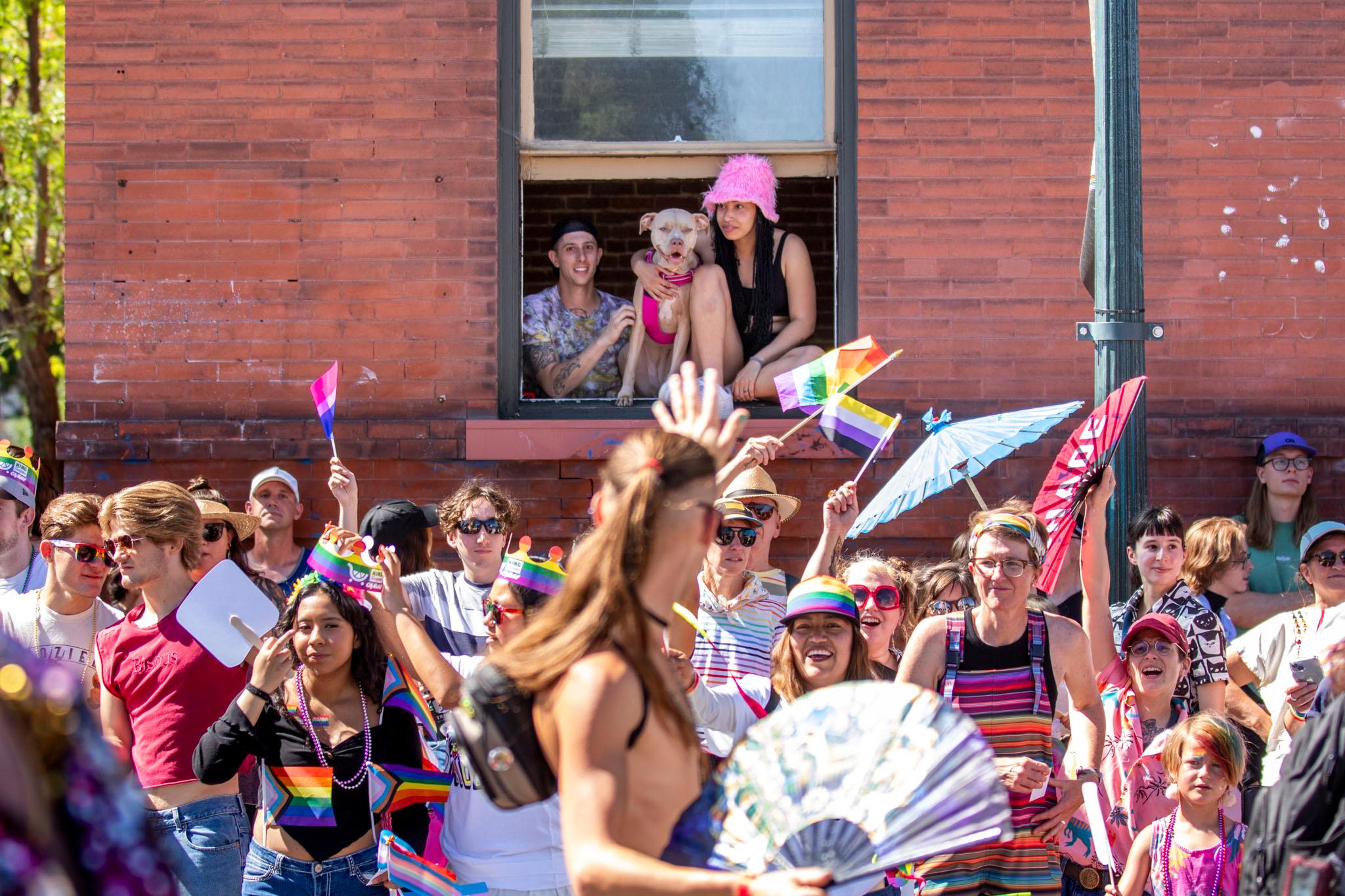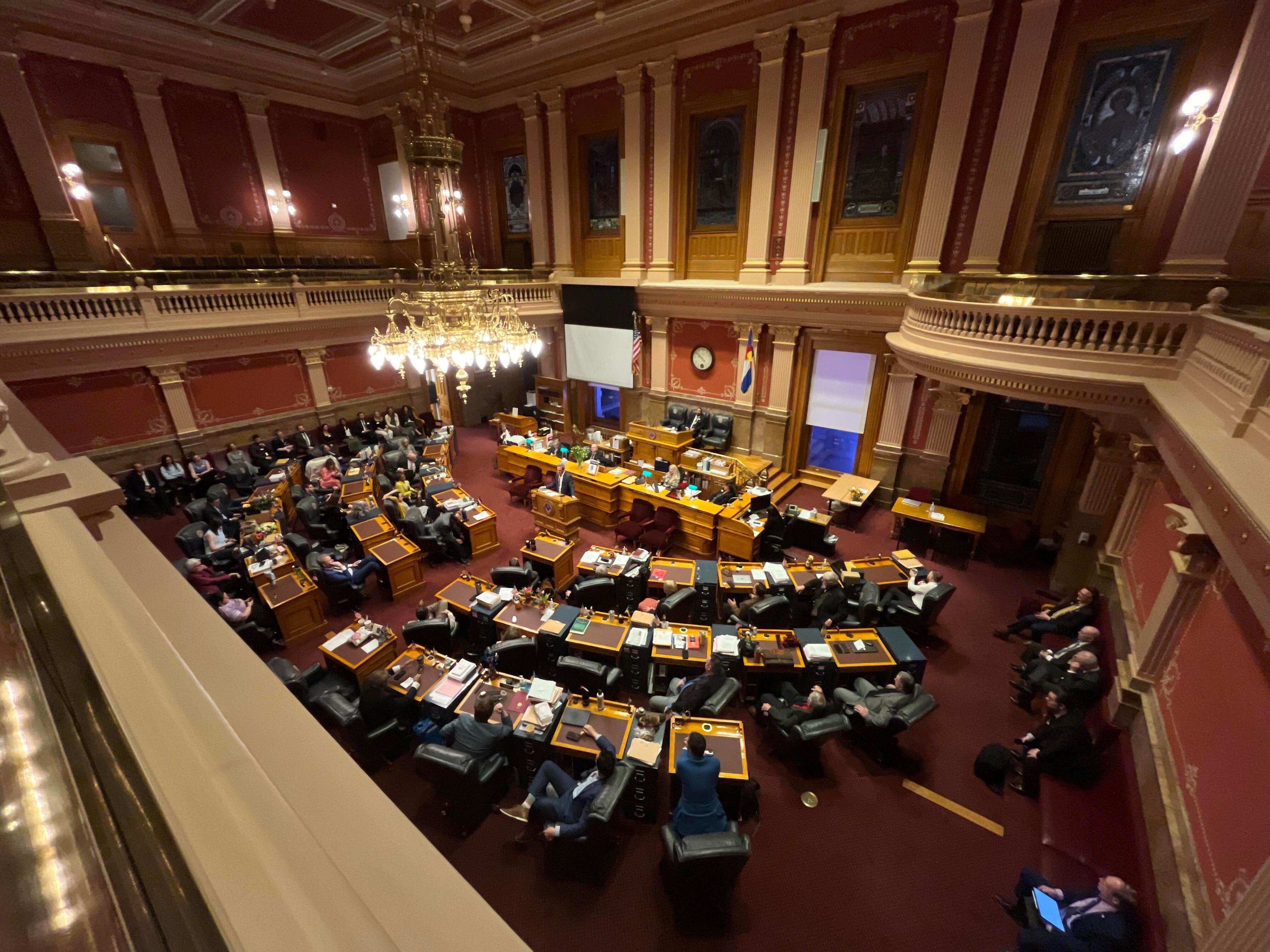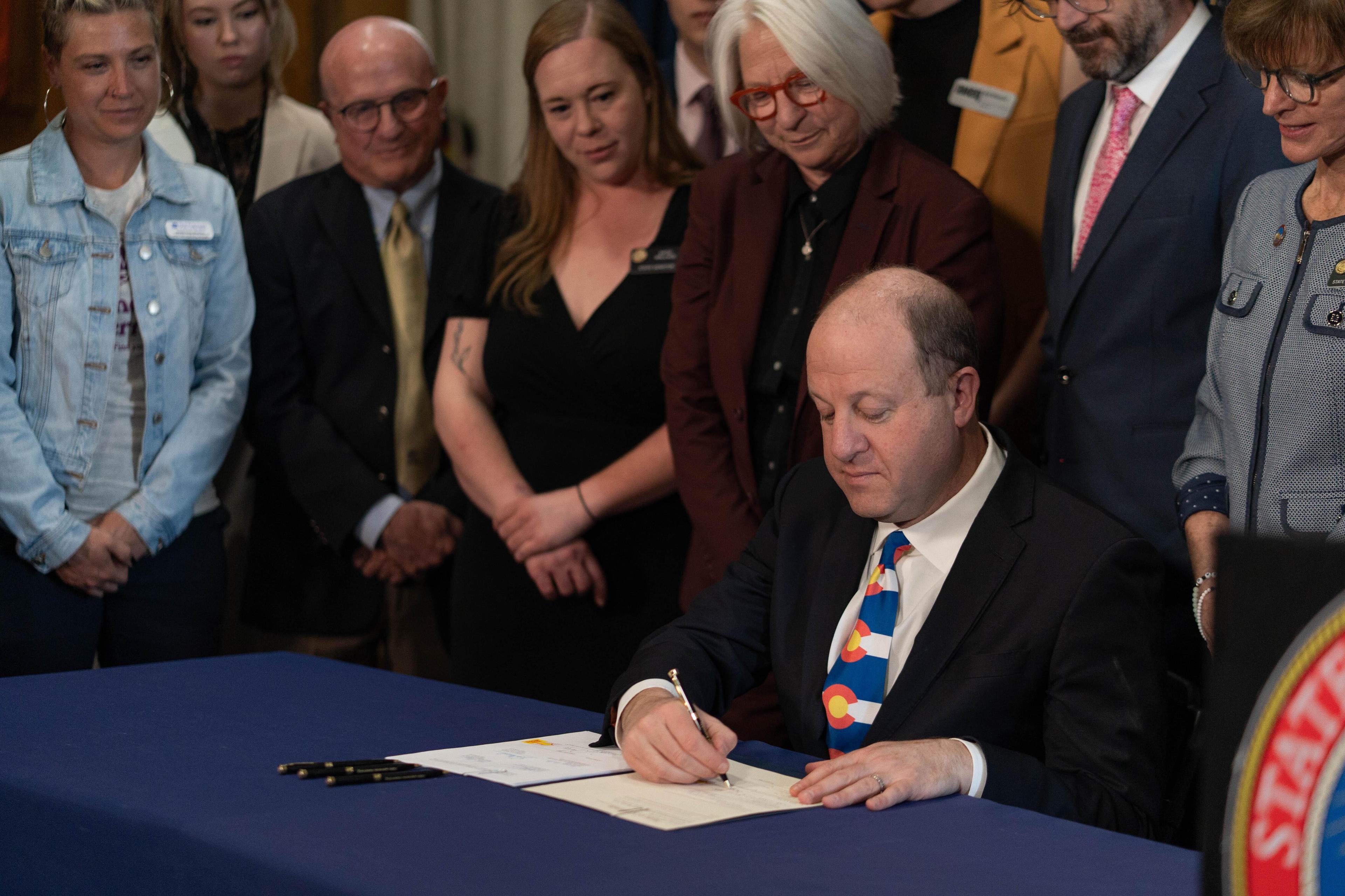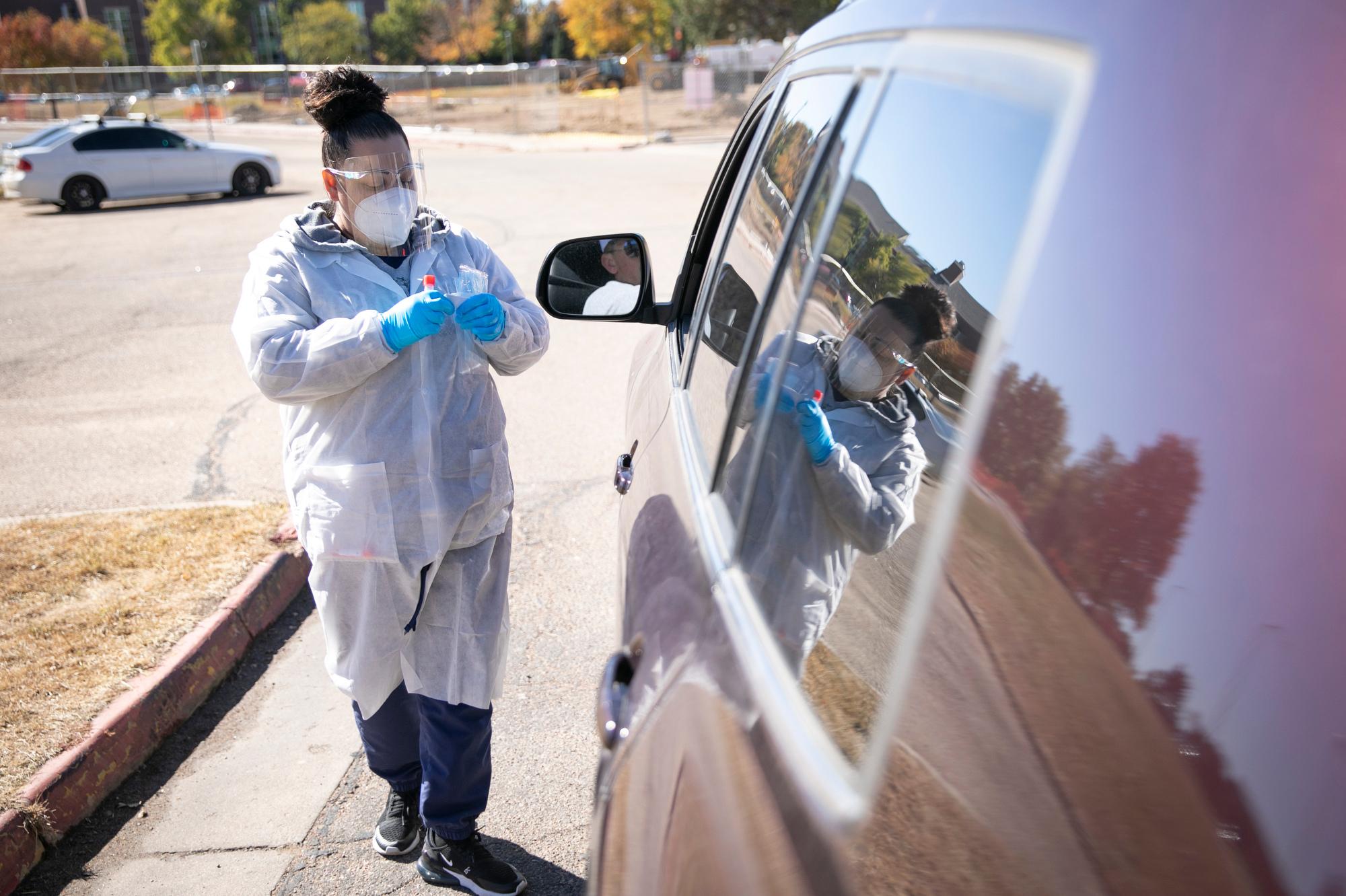
For weeks, hospital ICUs and frontline providers have been slammed with COVID-19 patients.
“We're not just full with COVID right now, we're full with everything,” said Dr. Diana Breyer, a pulmonary critical care physician with UCHealth in northern Colorado.
“Overwhelmingly unvaccinated patients are those that are hospitalized or are severely ill,” said Dr. J. David Cowden, a pulmonologist with Banner Health in the same region.
The situation has gotten so dire, Larimer County’s public health department reissued a requirement that masks be worn in all indoor public spaces, starting Wednesday.
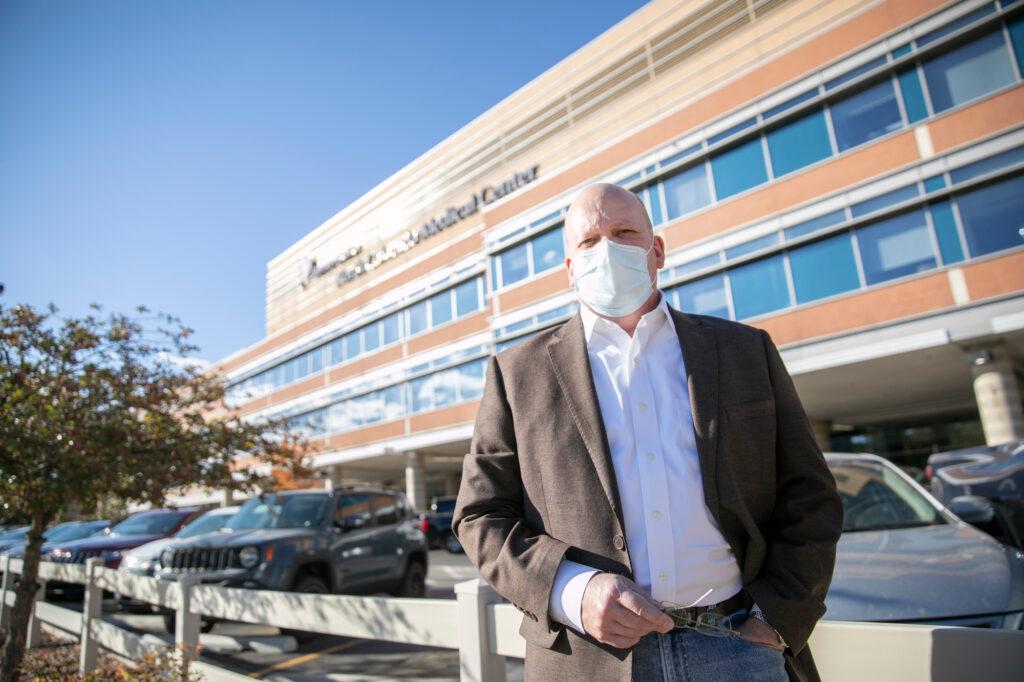
“Larimer County hospitals are being overburdened,” said Tom Gonzales, the county’s public health director.
But in pockets of northern Colorado and other spots around the state, it’s another world. In a good way.
The reason: Vaccines.
The UNC and CU Boulder campuses are vaccine islands in Weld and Boulder counties.
The two-week cumulative incidence rate in Weld County is high, now 643 per 100,000 residents.
But on the campus of the 9,900-student University of Northern Colorado in Greeley, they’ve had just 126 cases since early August and the only outbreak is on the school’s football team, according to the state’s spreadsheet of weekly outbreaks. That works out to just about 10 per week since the start of classes in August, a fall-long two-week incidence rate that’s less than one-third of the rate in the surrounding county.
That same scenario is unfolding in locations across the state where either vaccine mandates or high acceptance rates of the COVID-19 vaccine have dramatically reduced the spread of the virus.
It’s happening on college campuses, residential care facilities, prisons and jails, and in some businesses, even in counties where rates remain stubbornly high and vaccine rates are low.
At UNC, it’s a reversal of fortune, because things had been dicey in the fall of 2020.
“The week of the 15th of November last year, we had 111 positive cases that we were dealing with,” said administrator Blaine Nickeson, who directs the school’s pandemic response. “That 111, all of their close contacts, were people that needed to quarantine.”
This fall, they had just 15 positive cases for the first dozen days of October. And now they’re up to 40 cases through October 18, a sign of how hard it still is to contain the virus.
The school requires masks in most indoor settings, like classrooms. There’s COVID-19 testing on campus, and vaccination is required, though exemptions are allowed. Nickeson said the rate is 85 percent for students, 91 percent for faculty and staff.
“Vaccination has really been the key to letting us get back to the normal college experience that people crave,” said Nickeson, whose official title is Associate Vice President for Administration.
The result for students has been a fairly normal fall semester, so far.
“It's definitely going really well. I don't think we've had many problems with COVID,” said freshman Tyler Collins.
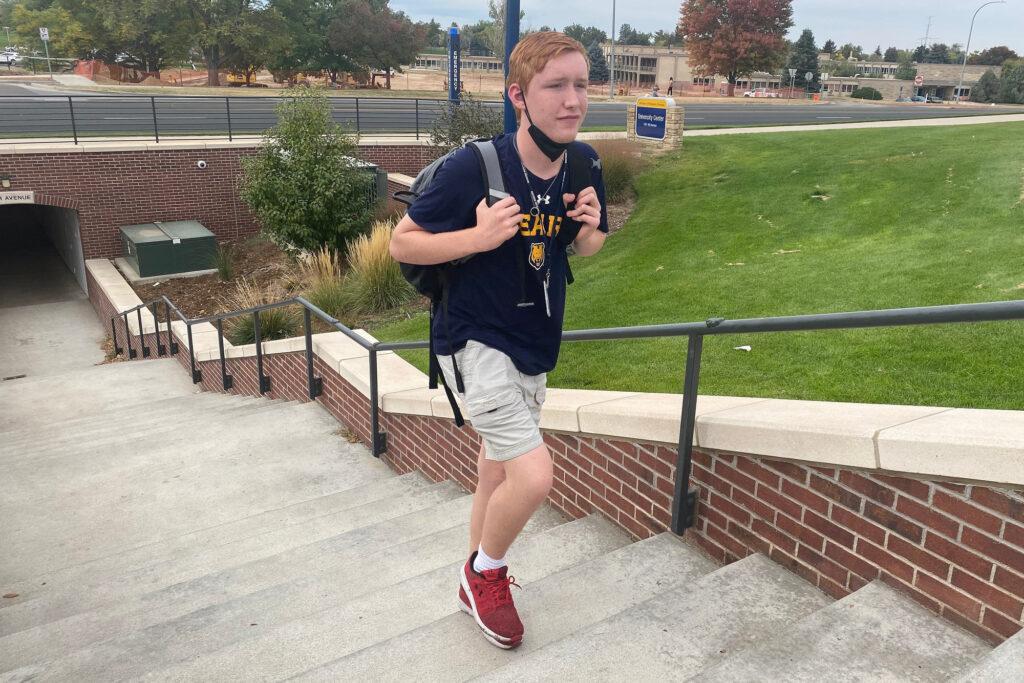
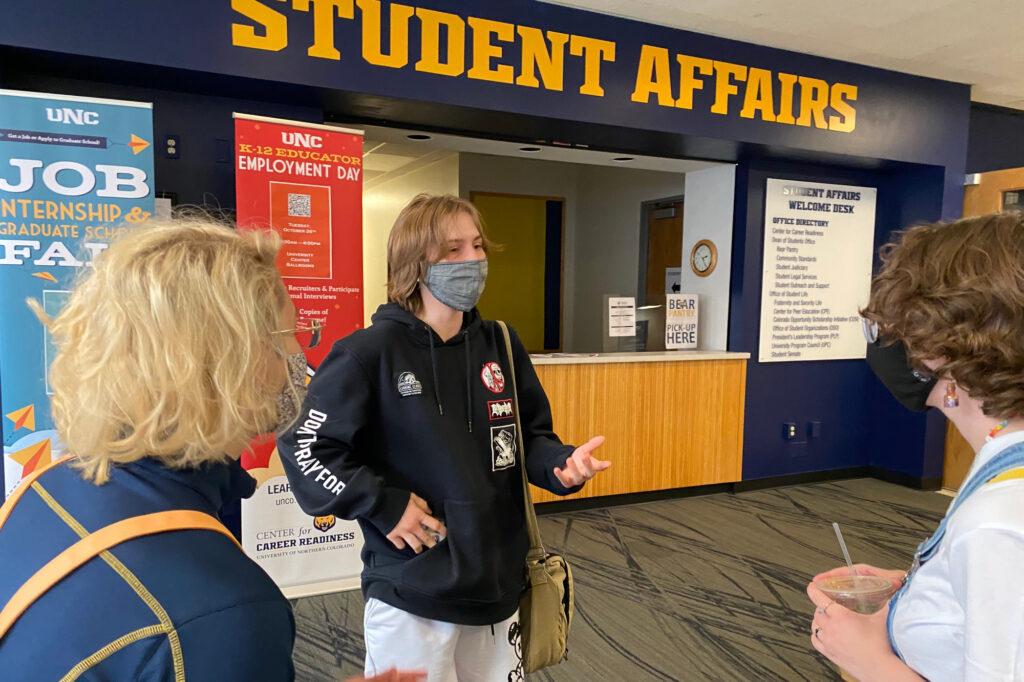
It’s the same deal at the University of Colorado’s main campus in Boulder. Students are back on campus. They’re filling the football stadium and classrooms, where they’re required to wear masks. Vaccination for students and staff is north of 95 percent, which is higher than Boulder County’s 84 percent of eligible residents having gotten at least one dose.
“I would call us a highly vaccinated institute,” said CU’s Kristen Bjorkman, who was the school’s COVID-19 scientific director for the past year.
She said case numbers are low. For example, on Oct. 12 the school recorded just two cases. That’s among a population of nearly 36,000 students. Bjorkman said test positivity rates have generally been two percent or lower, often less than half that of Boulder County, where CU is located, and which now has a 4.4 percent 7-day positivity rate.
Last year, the university had nearly 3,800 cases in an outbreak. Since that was resolved in June, they’ve had no more outbreaks. This fall, through mid-October, they’ve had 93 positive cases. Total.
“It’s a pretty stark contrast,” said Bjorkman.
You can see the impact of vaccines on college campuses all around Colorado.
Last year, the COVID-19 incidence rate for college-age adults in the county was high. This year, with students having gotten vaccine shots, it’s much lower, she said, calling it “kind of a good showcase of what we can aspire to. We can get back.”
“It makes complete sense that vaccination would have that effect,” said Ajay Sethi, an associate professor of population health sciences at the University of Wisconsin in Madison.
Last year the virus upended the UW school year, but this fall is better.
“That's the intention of the vaccines, is to prevent people from getting the infection and spreading it,” he said.
But it’s more than vaccination, it’s the entire “Swiss cheese” approach of multi-layered protections, masking, testing and robust ventilation that's making a difference, Sethi said. And that’s even despite the highly contagious delta variant.
“It's really a cluster of a lot of different behaviors that contribute to cutting back the transmission of this virus on campuses,” Sethi said.
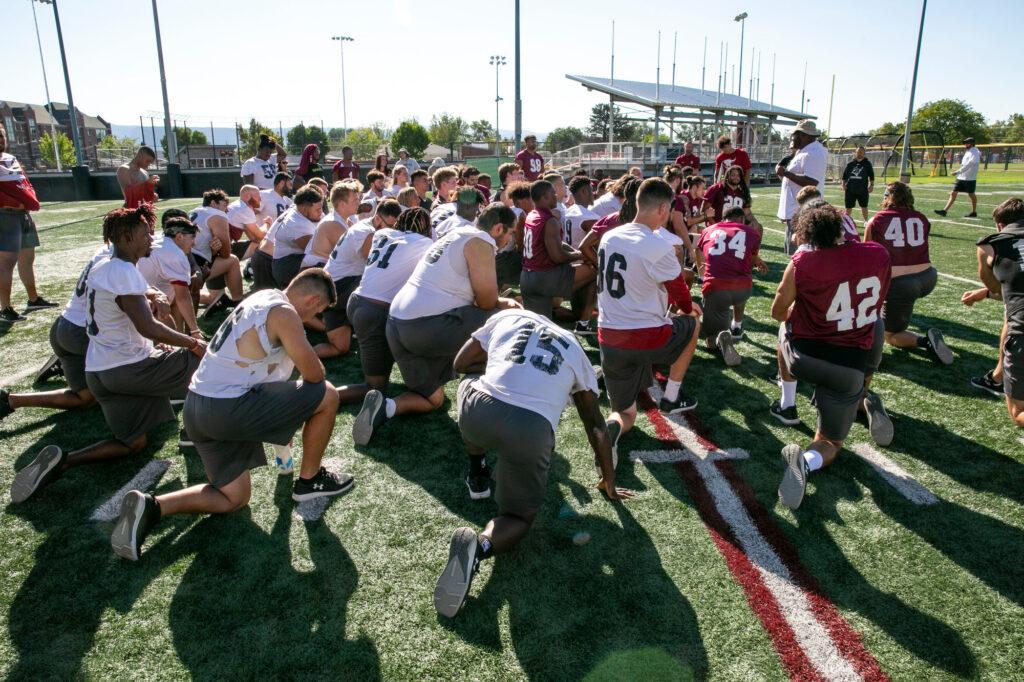
CPR News examined coronavirus rates at colleges in Colorado and compared them to their home counties. In case after case, the same pattern holds true: high vaccination, plus other mitigations, equals low transmission.
“With a highly vaccinated population, we're not seeing a lot of transmission, we're not seeing classroom transmission,” said Lori Lynn, the executive director for the Colorado State University health network, who co-chairs CSU’s pandemic preparedness team. She said 88 percent of students are vaccinated and the figure is slightly lower (85 percent) for faculty and staff. That compares with 75 percent of the eligible population in Larimer County, where it’s located.
Larimer County now has a two-week incidence rate of 501 per 100,000 people, which is considered high. In October, CSU recorded an average of 8 new coronavirus cases a day, according to its dashboard, on a campus with 33,000 students. That produces a rate per 100,000 about one-third below the surrounding community.
Lynn said even on the Fort Collins campus where there are lots of close interactions and congregate living in dorms and off-campus housing, it seems to work. And she said it gives you an idea that the state could have the pandemic on the run if more people got vaccinated.
“I do think it represents where we could be if we had higher levels of vaccination,” Lynn said.
Pre-vaccine (March 2020-Dec. 31, 2021), the state health department recorded 42 outbreaks and nearly 8,800 cases of COVID-19 at higher education institutions, with 17 hospitalizations and one death.
After vaccination efforts started early this year, through mid-October (Jan. 1-Oct. 14, 2021), the department documented a similar number of outbreaks (40) but far fewer cases (510) and no hospitalizations or deaths.
COVID in higher education, pre- and post-vaccine
| Time Period | Number of Outbreaks | Cases | Hospitalizations | Deaths |
| Pre Vaccine (March 1, 2020 - Dec. 31, 2020) | 42 | 8,787 | 17 | 1 |
| Post Vaccine (Jan. 1, 2021 - Oct. 14, 2021) | 40 | 510 | 0 | 0 |
And it’s not just college campuses seeing the benefits.
The pattern repeated itself at the other end of the age spectrum, in residential health care facilities, in a variety of locations, like assisted living and skilled living facilities and hospice care.
Slightly fewer outbreaks occurred in the pre-vaccination period compared with post-vaccination, but the cases, hospitalizations and deaths were a fraction of the numbers seen before. Pre-vaccination, during recorded outbreaks, those settings documented 24,381 cases, 1743 hospitalizations and 2542 deaths, way more than the number of cases (4,429), hospitalizations (165) and deaths (161) seen after.
COVID in residential health care, pre- and post-vaccine
| Time Period | Number of Outbreaks | Cases | Hospitalizations | Deaths |
| Pre Vaccine (March 1, 2020 - Dec. 31, 2020) | 720 | 24,381 | 1,743 | 2,542 |
| Post Vaccine (Jan. 1, 2021 - Oct. 14, 2021) | 678 | 4,429 | 165 | 161 |
A similar story unfolded in Colorado correctional facilities, according to the state health department. In the pre-vaccination time frame, the facilities, which include a broad array of locations from federal and state prisons to jails to law enforcement administration offices, the state health department documented 135 outbreaks, nearly 17,000 cases, 79 hospitalizations and 34 deaths.
After vaccinations began at the start of the year, those facilities still saw 98 outbreaks, but only a fraction of the cases (about 2,000), hospitalizations (10) and deaths (two).
“The data show a clear reduction in outbreak associated cases, hospitalizations, and deaths across almost every setting type following the rollout of the highly effective COVID-19 vaccines,” a CDPHE spokeswoman said in a statement to CPR News.
That’s despite limitations that included a slightly longer period of time in the data pre-vaccination compared to post, the timing for initial access to vaccinations varying by the type of setting and a change in the definition of outbreaks in June, which raised the number (to five from two) of confirmed or positive cases to qualify as an outbreak.
Restaurants and bars in Colorado saw vaccinations ease the impact of the pandemic.
“Prior to the vaccine, I mean, we were rolling through, we had several shutdowns, we were rolling through outbreaks at the restaurant,” said Jacqueline Bonanno, co-owner of Denver-based restaurant group, Bonanno Concepts, which operates nine restaurants and a food hall.
She said before vaccinations were available, a restaurant would close when employees caught COVID-19. But last spring, once vaccinations began, she and most of her staff jumped at the chance and the group chose to require vaccination of its roughly 350 employees. Most employees got shots and stayed healthy. They parted ways with seven and helped them get other jobs.
Bonanno said her restaurants have remained open and business rebounded.
“What the restaurant industry is going through in general is pretty striking. And we are in a good place, and the vaccination policy is part of it,” said Bonanno.
The group recently decided to require customers to show proof of vaccination, a move Bonanno said most applauded.
“It's our job to provide as safe a workplace as possible. That’s why we have a health department,” she said.
Vaccines helped the hard-hit JBS plant in Greeley recover.
Last year, another workplace, the JBS meat plant in Greeley was the scene of one of the state’s largest and most deadly outbreaks of the pandemic. At the start of the pandemic, pre-vaccination, COVID-19 hit the plant hard. A year later, it hosted one of Colorado’s first mass vaccination efforts.
The company didn’t respond to a request for an interview. But a representative from a worker’s union did.
“It’s been night and day,” said Adriana Escobar, a union director, with the United Food and Commercial Workers Union Local 7, UFCW Local 7.
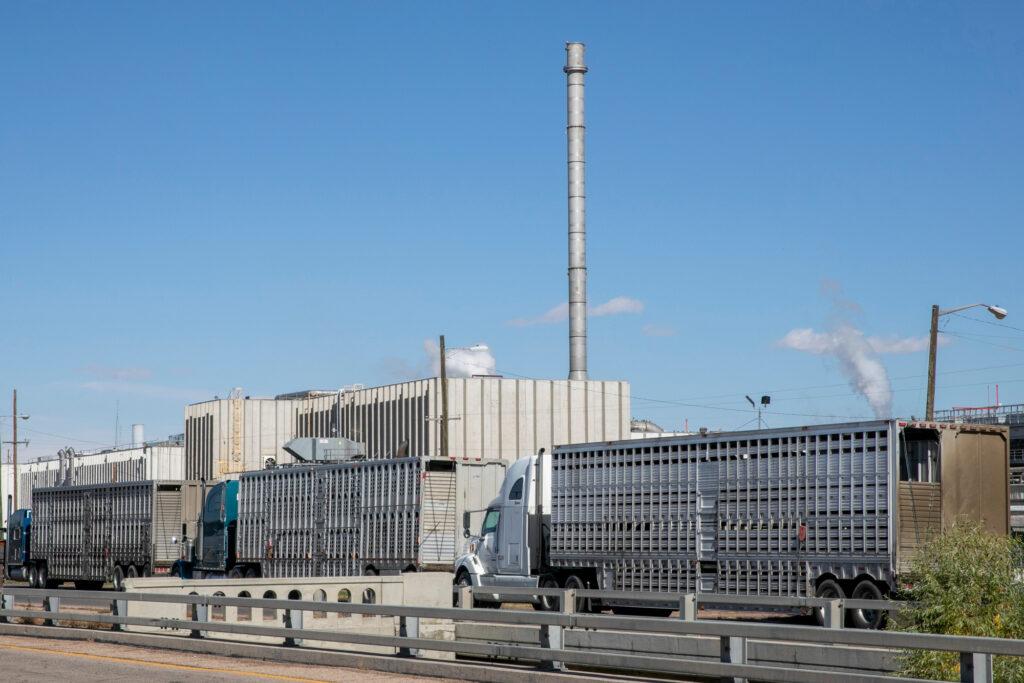
The union said at least 70 percent of roughly 3,000 workers have been vaccinated for months.
While an outbreak in the corporate offices remains active, the last outbreak on the factory floor was resolved in June, according to a spreadsheet of outbreaks from the state’s COVID-19 dashboard.
The union said it recorded 215 positive coronavirus cases and 6 deaths between March 2020 and when vaccinations began at the facility about a year later. Since then, it’s documented 26 positive cases and no deaths. The union said it didn’t have data on hospitalizations of workers.
The union’s Escobar said vaccination has made a difference.
“I feel like it has and we obviously hope that it continues to have a positive impact on just everyone that works there,” she said.
The resistance to vaccines has slowed their impact.
The results on campuses, residential healthcare facilities and businesses with high vaccination rates were expected when the vaccines were developed quickly and distributed across the country.
But the resistance to inoculation, fed by politics and social media, has slowed the overall impact on society.
“Absolutely, vaccination prevents hospitalization,” said Cowden, who directs pulmonary care for Banner Health in northern Colorado.
Sixty percent of the state’s total population is now fully vaccinated. But Cowden noted that of those sick enough to be checked into his hospital, and those around the state, more than four-fifths are unvaccinated with winter growing near.










